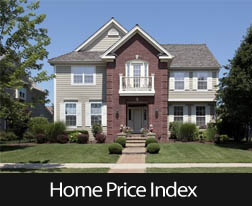Case-Shiller Home Prices: San Francisco, Denver see Double-Digit Increases
 San Francisco, California where home prices rose 10.30 percent year over year in March, and Denver, Colorado with an even 10 percent gain in year-over-year home prices led the Case-Shiller 20-City Composite Index for March. Rounding out the top-five cities for year-over-year home price growth were Dallas Texas at 9.30 percent, Miami, Florida at 8.70 percent and Tampa, Florida with a year-over-year average gain in home prices at 8.10 percent. San Francisco’s reading for March was the first double-digit increase in home prices since last July.
San Francisco, California where home prices rose 10.30 percent year over year in March, and Denver, Colorado with an even 10 percent gain in year-over-year home prices led the Case-Shiller 20-City Composite Index for March. Rounding out the top-five cities for year-over-year home price growth were Dallas Texas at 9.30 percent, Miami, Florida at 8.70 percent and Tampa, Florida with a year-over-year average gain in home prices at 8.10 percent. San Francisco’s reading for March was the first double-digit increase in home prices since last July.
The five lowest year-over-year price gains occurred in Washington, D.C. and Cleveland, Ohio tied at gains of 1.0 percent, New York City with a year-over-year gain of 2.70 percent, Minneapolis, Minnesota with a gain of 3.00 percent and Phoenix, Arizona with a year-over-year increase of 3.10 percent.
Overall, the Case-Shiller 20-City Home Price Index rose by 5.0 percent year-over-year and by 0.90 percent in March. Analysts said that while home prices remain 16 percent below their pre-recession peaks, home prices are 31 higher than the lows recorded in March 2012.
When asked if house prices are in a bubble, David Blitzer, chairman of the S&P Index Committee said that “The only way to tell if housing prices were in a bubble is looking back after it’s over.” Mr. Blitzer said that adjusted for inflation, home prices have increased on average by one percent per month since 1975, and that the current 4.10 percent monthly growth of home prices could suggest a bubble. Mr. Blitzer cautioned that home price increases are outpacing increases in personal income and national wage growth, a circumstance which reduces the pool of potential home buyers due to affordability issues.
FHFA House Price Index Posts 5.2 Percent Gain Year-Over-Year
The Federal Housing Finance Agency (FHFA) reported that as of March, prices for homes connected with Fannie Mae and Freddie Mac mortgages rose by 5.20 percent year-over-year. The agency also said that average home prices increased by 1.30 percent in the first quarter of 2015.
Home prices were 5.0 percent higher in the first quarter of 2015 than for the first quarter of 2014. This data is consistent with the unrelated Case-Shiller home price data for March. FHFA reported that home prices rose in 48 states between the first quarters of 2014 and 2015. The states with the top rates of year-over-year home price growth were:
Colorado 11.20 percent
Nevada 10.10 percent
Florida 8.70 percent
Washington 7.60 percent
California 7.50 percent
The Mountain Division led the nine Census Bureau Divisions in home price growth with a growth rate of 2.60 percent in the first quarter and a year-over-year growth rate of 6.80 percent.

 According to the Case-Shiller 20-City Home Price Index for February, month-to-month home prices increased by 0.50 percent from January’s reading and achieved the highest year-over-year gain in six months. Analysts expected February home prices to increase by 4.80 percent. David Blitzer, chairman of the S&P Dow Jones index committee, said that home prices continue to rise and outpace both inflation and wage gains. Although this is great news for homeowners, it also demonstrates the challenge of affordability for home buyers.
According to the Case-Shiller 20-City Home Price Index for February, month-to-month home prices increased by 0.50 percent from January’s reading and achieved the highest year-over-year gain in six months. Analysts expected February home prices to increase by 4.80 percent. David Blitzer, chairman of the S&P Dow Jones index committee, said that home prices continue to rise and outpace both inflation and wage gains. Although this is great news for homeowners, it also demonstrates the challenge of affordability for home buyers. According to the S&P Case-Shiller Home Price Index report for January, home prices grew by 4.50 percent year-over-year as compared to January 2014’s year-over-year price growth rate of 10.50 percent. This was the lowest rate of home price growth since 2012.
According to the S&P Case-Shiller Home Price Index report for January, home prices grew by 4.50 percent year-over-year as compared to January 2014’s year-over-year price growth rate of 10.50 percent. This was the lowest rate of home price growth since 2012.